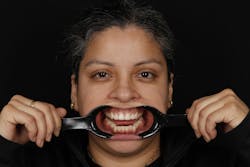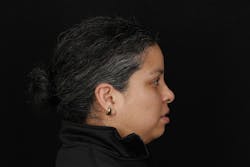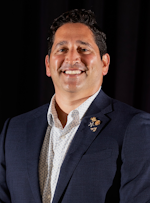Creating Consistency with Charlie and Chris: Photos for diagnostic planning
The question we receive most often from friends and colleagues who are planning a complex case is, “Where do I start?” They’ve collected all the appropriate data—radiographs, periodontal charting, scans/impressions, and more—but they’re stuck on how to start the process. The first thing we say is, “Let’s look at the photos.” This is sometimes met with an awkward silence because they didn’t take any photos.
Planning complex dentistry in the digital world requires photography! We have many tools at our disposal to increase our chances of success, both esthetically and functionally. But we need to ask, “What is the ideal position of the teeth in this person’s face and smile?” The best way to see this and plan this is with photography.
Our preference is to use a DSLR (digital single-lens reflex) camera to take photos, but if you only have a smart phone or tablet with a camera, that will do too. Here’s a look at the basic photos you need to start your planning process.
Basics to get you started
The most essential photo for us is a repose or lips-at-rest photo. You can take this full face (figure 1a) or close-up (figure 1b). Our goal is to determine where the incisal edge of the central incisors needs to be. Without the repose photo, we’re simply guessing at our starting point.
Next, we need a full-face big smile (Duchenne) photo (figure 2). The important aspects of this photo are to see above the patient’s head and below their chin, and to make sure the patient is looking directly toward the camera. Use the temples as a reference to make sure the patient isn’t looking right or left as this will affect the midline. Last, for an ideal smile curve assessment, take this photo at the patient’s eye level.
If we’re going to be using this image for 3D planning, we ask the patient to open just enough to see the edges of the anterior teeth. This will allow for more accuracy in overlaying the 3D scans with the photo. If the patient doesn’t show a lot of tooth structure when smiling, it may be necessary to take this photo with retractors in place (figure 3). The laboratory or smile designer can then overlay the retracted photo, the smile photo, and the STL files.
We also like to take the full-face profile photos in smile (figure 4) and repose (figure 5). These help in assessing the skeletal profile as well as occlusal plane and incisor inclination.
Finally, a recent addition to our workflow is the 12 o’clock photo (figure 6). We learned this one from Christian Coachman and the DSD workflow.1 This helps to see the incisal edge position as it relates to the wet-dry border of the lower lip. We can decide if teeth are lingually or facially positioned and where we have room to position them in the smile zone.
A bonus feature
We add one bonus feature, and that’s a patient video. I like to take 20 to 30 seconds of video just in normal conversation with the patient because we can often see both a true repose and a true Duchenne smile. This is often more than we see even when we ask for a big smile in a static photo.2
With this collection of photos, we can start designing our ideal smile in the patient’s face. We’ll often do a 2D design (figure 7), then share this with the laboratory to create a 3D design that we will then use for treatment.
There are many different photo series available, and they all serve their own purpose. This series will help you treatment plan in the patient’s face and hopefully improve your esthetic outcomes. Start with repose and incisal edge position and see what’s possible.
Editor's note: This article appeared in the February 2025 print edition of Dental Economics magazine. Dentists in North America are eligible for a complimentary print subscription. Sign up here.
References
1. Coachman C, Yoshinaga L, Calamita M, Sesma N. The digital smile design concept. Digital Smile Design.https://go.digitalsmiledesign.com/hubfs/DSD%20Articles/Articles%20by%20CC%20and%20Team/Apostila_DSD.pdf
2. Maulik C, Nanda R. Dynamic smile analysis in young adults. Am J Orthod Dentofacial Orthop. 2007;132:307-315. doi:10.1016/j.ajodo.2005.11.037


















